A surprise sandstorm offers insights on the regional response to climate change
Uzbekistan Confronts its Environmental Challenges
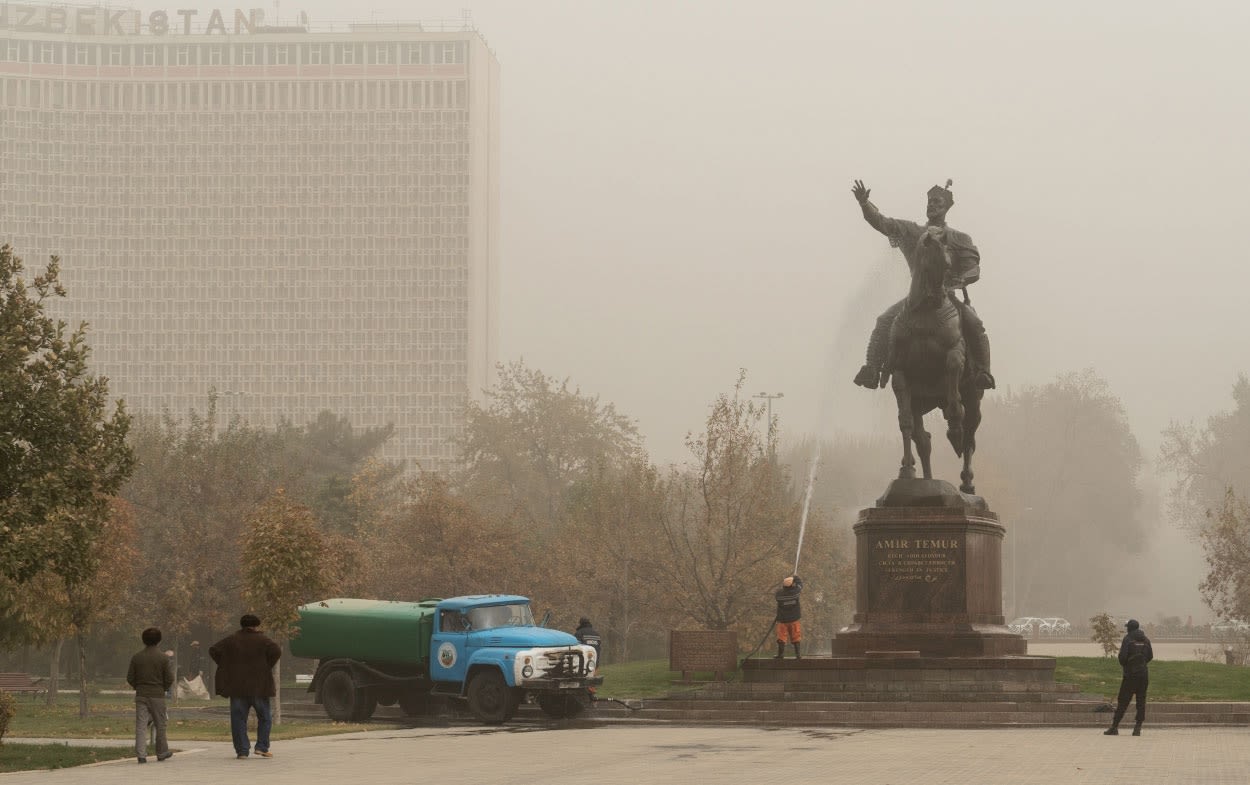
I moved to Tashkent from Bishkek, Kyrgyz Republic, in early September 2021—over a year after I was scheduled to take a new assignment at IFC. The pandemic was the cause of the long delay, but the autumn move was a well-timed introduction to my new home. I’ll always remember the sunny, warm weather that greeted my arrival. The fall harvest yielded melons and pomegranates, which are considered essential to any Uzbek dastrakhan (a traditional table setting). I’ll never forget the many warm, kind Uzbek people who welcomed me to their country.

Kymbat Ybyshova in her new home. Photo courtesy: Kymbat Ybyshova
Kymbat Ybyshova in her new home. Photo courtesy: Kymbat Ybyshova
There’s something else I’ll never forget about my first autumn in Tashkent: the sudden, unusual, and severe sand and dust storm that began on November 4 and quickly paralyzed the city.
This strange weather phenomenon, which settled over and around the city for a couple of days, took everyone by surprise. In the 150 years that weather has been monitored in Tashkent, such extreme dust conditions have never before been observed, according to the state weather agency. Conditions became threatening when dust concentrations reached a level that is 30 times what is considered safe, with a deterioration in visibility of 100 to 200 meters. Despite keeping the windows closed at all time, we woke up to a thin layer of dust throughout the house.
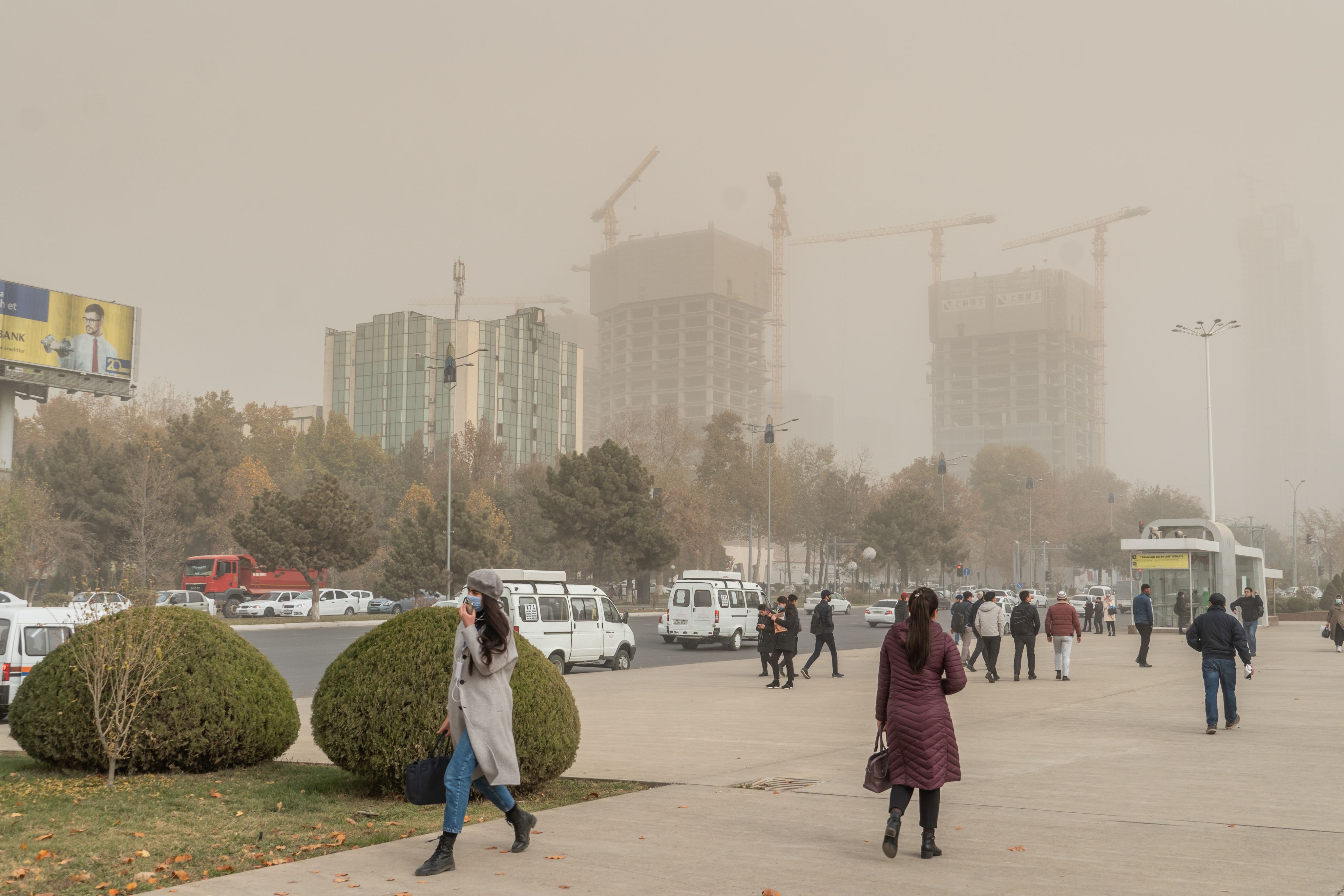
During Tashkent's unprecedented sand and dust storm, visibility dropped dramatically. Photo by Andrey Kudryashov
During Tashkent's unprecedented sand and dust storm, visibility dropped dramatically. Photo by Andrey Kudryashov
I read a lot of analysis about what could have contributed to the severity of the sand and dust storm—and climate change kept coming up as a potential culprit. Some experts linked the storm to the drying up of the Aral Sea and desertification, for example. Others pointed out the construction boom in Tashkent, and the practice of cutting down forests and trees to make space for new communities. That’s an especially important point considering that sand and dust storms like the one I experienced occur when winds blow over dry land with sparse or absent vegetation. Arid and semi-arid areas already account for 70 percent of Uzbekistan’s territory.
Following the storm, the government of Uzbekistan confirmed that Uzbekistan needs to intensify its efforts to combat climate change. It announced an urgent 40-day tree-planting campaign and an increased number of green zones in cities, from the current 8 percent to 30 percent.
But what were the other responses to climate change, especially from the people all around me? I decided to reach out to local business and community leaders to learn how society and businesses are confronting these environmental challenges, and what environmental stewardship might look like for the coming generations.
Promoting renewables
The first person I contacted was Farrukh Asralkhodzaev, director and founder of Solar Nature Ltd. I wanted to learn more about the status of renewable energy solutions in Uzbekistan, and his company, established in 2014, distributes solar panels, inverters, batteries, and solar water heaters that are produced with parts from local manufacturers.
Promoting renewables is in line with the government’s plans to increase the share of renewables in power production by up to 25 percent of total electricity generation by 2030. Asralkhodzaev has noticed a more positive attitude toward renewables in the past couple of years, although he says that this shift is happening rather slowly. Several regulations for the development of the renewable energy sector have been adopted, though he acknowledges that much needs to be done. For example, a mechanism for selling surplus solar energy to the grid is not in effect yet, though he says it could be “a very good incentive” for the introduction of renewable energy sources.
The focus on renewables is important because it will reduce the pressure on natural resources and the environment. I saw firsthand the significant damage inflicted by November’s sand and dust storm; the United Nations warns of more frequent natural disasters, including droughts, floods, and landslides. In addition, Uzbekistan’s already-scarce water supply might worsen due to an expected reduction of existing water resources coupled with rising temperatures.
Asralkhodzaev shared his vision of what needs to be done to mitigate climate change: “Many people still do not understand, do not even imagine how fast climate change is happening,” he said. “Thus, it is important to teach children to care for the environment and be environmentally friendly.”
With large-scale construction underway in Uzbekistan, he believes it is necessary to introduce new energy efficient technologies and develop "green tariffs" for new buildings. State incentives are also necessary, he says, and he is an advocate of subsidies for enterprises and individuals who use renewable energy sources. Some renewable energy projects are already being implemented with the support of IFC and other international finance institutions in the country.
More broadly, Uzbekistan is adopting efforts to green its economy by increasing energy efficiency, enhancing the use of renewable energy, improving resource efficiency and crop yields, and limiting land degradation.
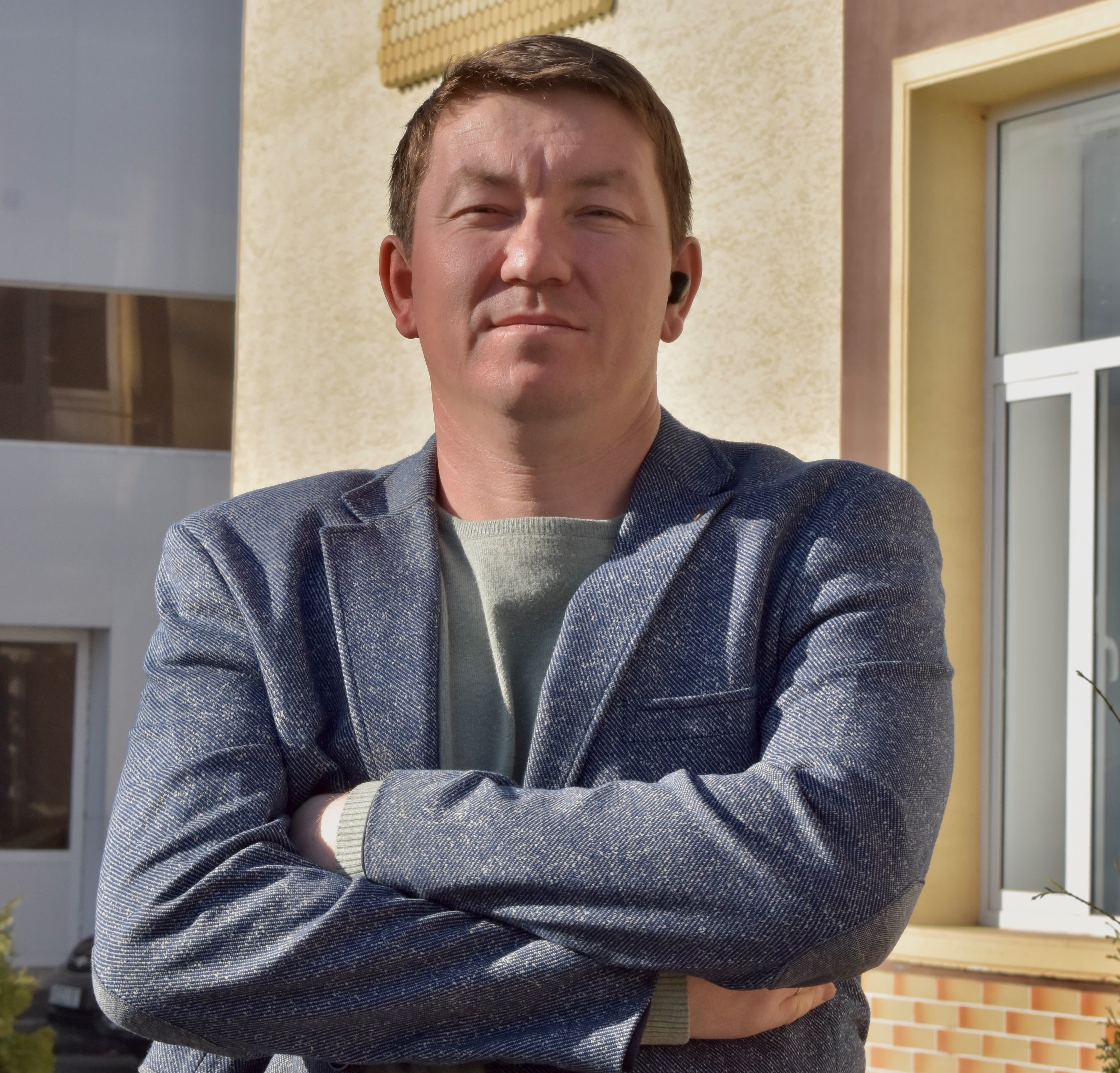
Zarif Garayev, a director of SKB LLC. Photo courtesy: Zarif Garayev
Zarif Garayev, a director of SKB LLC. Photo courtesy: Zarif Garayev
Zarif Garayev, a director of SKB LLC, which helps companies improve their energy efficiency, also believes that there is a need to increase the use of alternative energy sources such as solar, wind, and water power, so the consumption of fossil fuels will be reduced. But he doesn’t think that it’s possible to move away from traditional energy right now, and says that improving the efficiency of energy resources use and developing an energy management system is the best way to reduce greenhouse gas emissions.
Identifying the “weak points”
I wanted to learn about what is happening in other green economy sectors, too. So I spoke to Saida Yusupova, a director of Green Business Innovation, a company that provides consultancy services in climate change solutions, green technologies, sustainable energy, renewables, and other climate-related innovations. The company helps clients to identify the "weak points" of production and save on water, electricity, heating, and other resources.
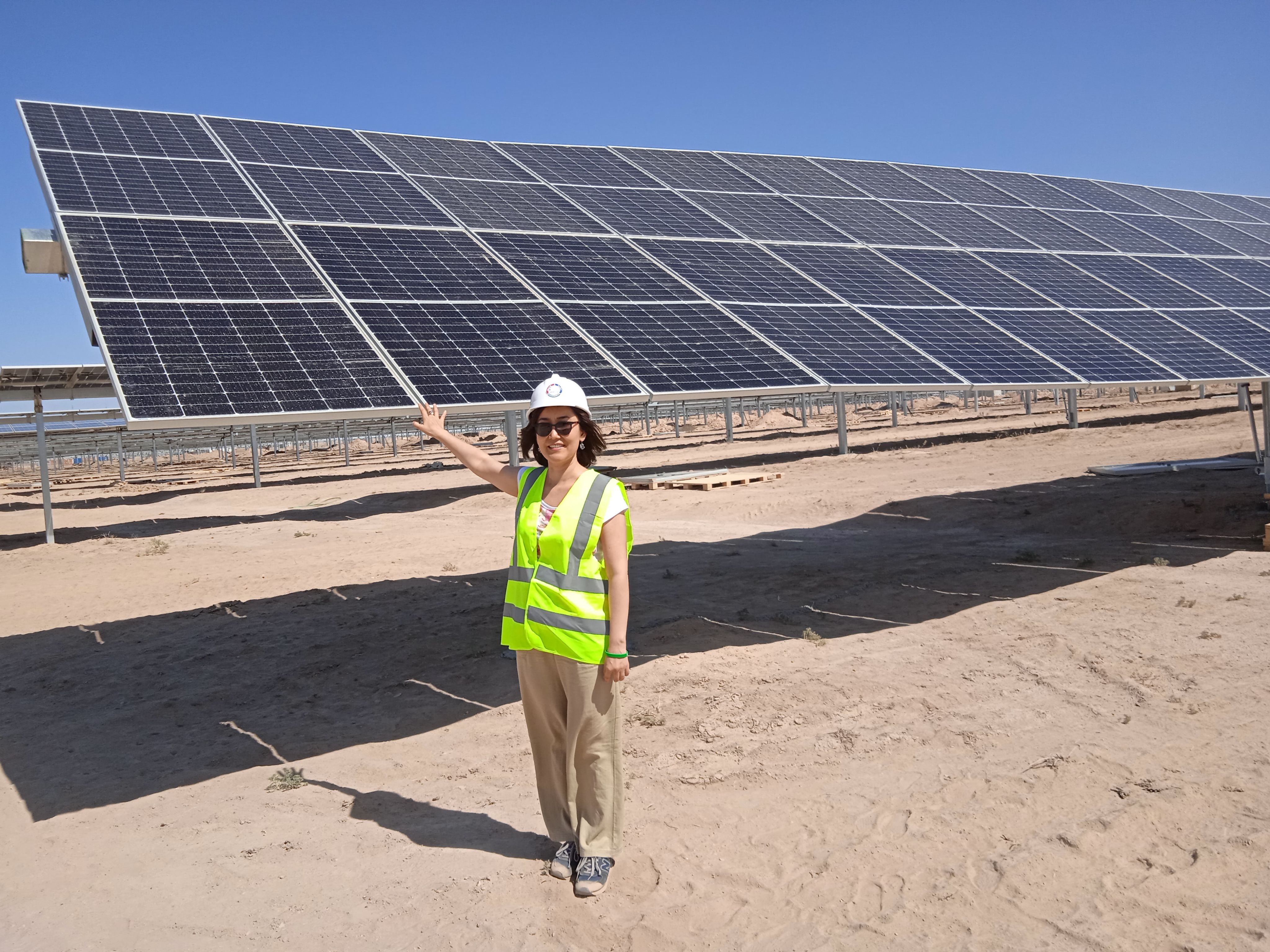
Awareness of environmental responsibility is growing, says Saida Yusupova. Photo courtesy: Saida Yusupova
Awareness of environmental responsibility is growing, says Saida Yusupova. Photo courtesy: Saida Yusupova
Yusupova thinks that it’s possible for companies like hers to flourish by pursuing green innovations in Uzbekistan.
“The most promising areas for business in this area are smart solutions in the field of waste management, water saving and energy efficient technologies, renewable energy sources, green solutions in construction, transport and agriculture, and ecotourism,” she said. “The demand for environmentally friendly products from responsible consumers is growing day by day in the country.”
Inspired by this conversation with Yusupova, I discovered La Lavande, a small company that makes skincare products from natural ingredients and has its own recycling system for plastic containers. The company employs 10 women. To get customers involved in the recycling process, it provides one product for free in exchange for five empty bottles. The company recently launched a zero-waste project that allows clients to bring their own container and buy sulfate-free shampoos, conditioners, natural shower gels and body lotions, creams, and other products. They can also purchase environmentally-friendly reusable containers.
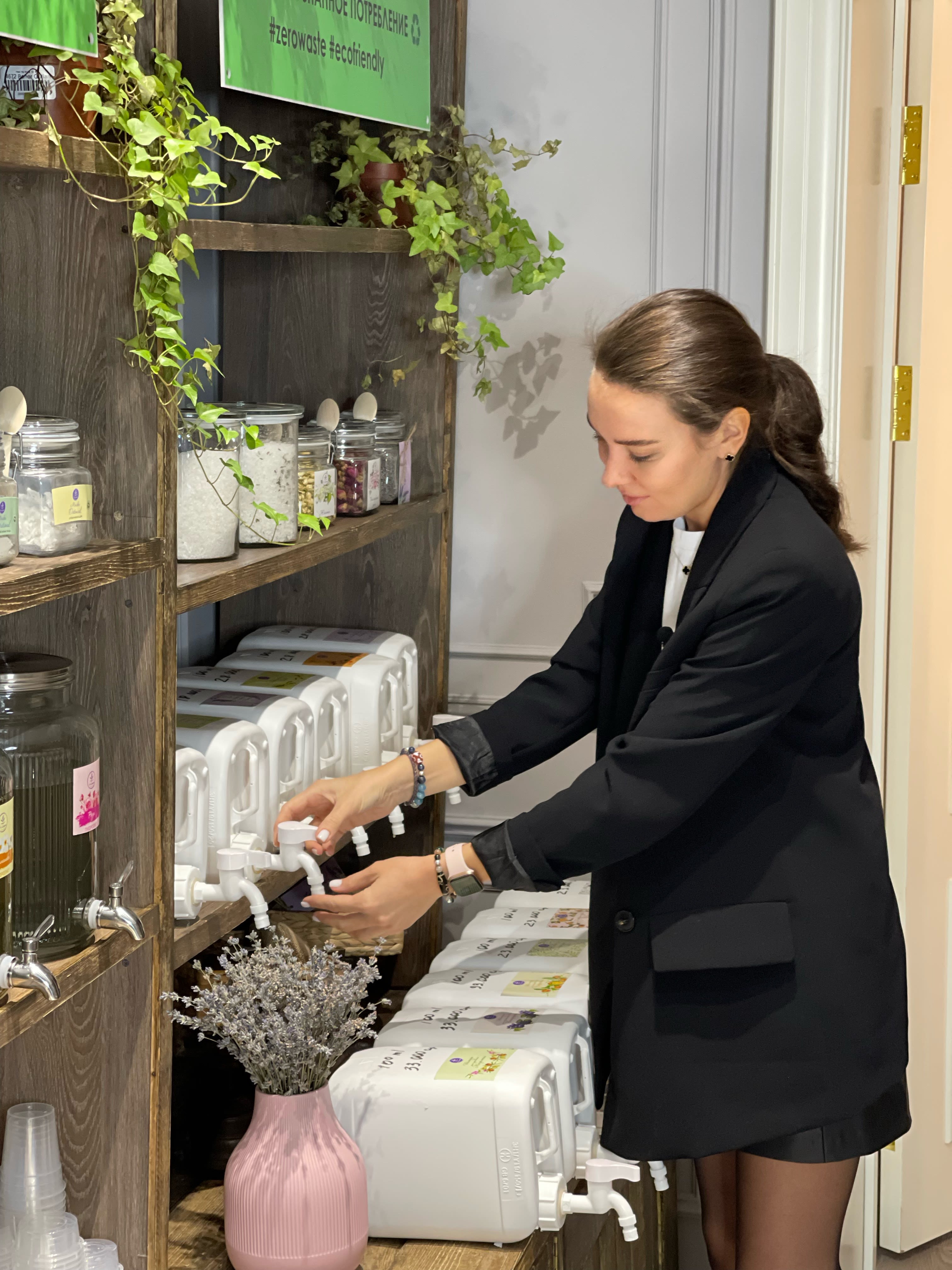
La Lavande's products are packaged in environmentally-friendly containers. Photo courtesy: Ralina Khasanova
La Lavande's products are packaged in environmentally-friendly containers. Photo courtesy: Ralina Khasanova
Ralina Khasanova, a founder of La Lavande, told me: “We are very pleased to see that the majority of our audience share with us an ecofriendly style and care for the environment. We do not impose our products on customers, and we urge them to buy only what is really necessary.”

A few of La Lavande's offerings. Photo courtesy: Ralina Khasanova
A few of La Lavande's offerings. Photo courtesy: Ralina Khasanova
“Garbage is not garbage”
La Lavande’s focus on recycling and re-use helped me discover Hashar Week, an all-volunteer effort launched in Tashkent in 2019 to draw attention to environmental issues. During the week, the city hosts events in four areas: arts, education, community action, and business. The nonprofit group behind Hashar Week also runs Green Office, a commercial project to separate collection of recyclable materials in corporate organizations. It serves 12 offices by subscription.
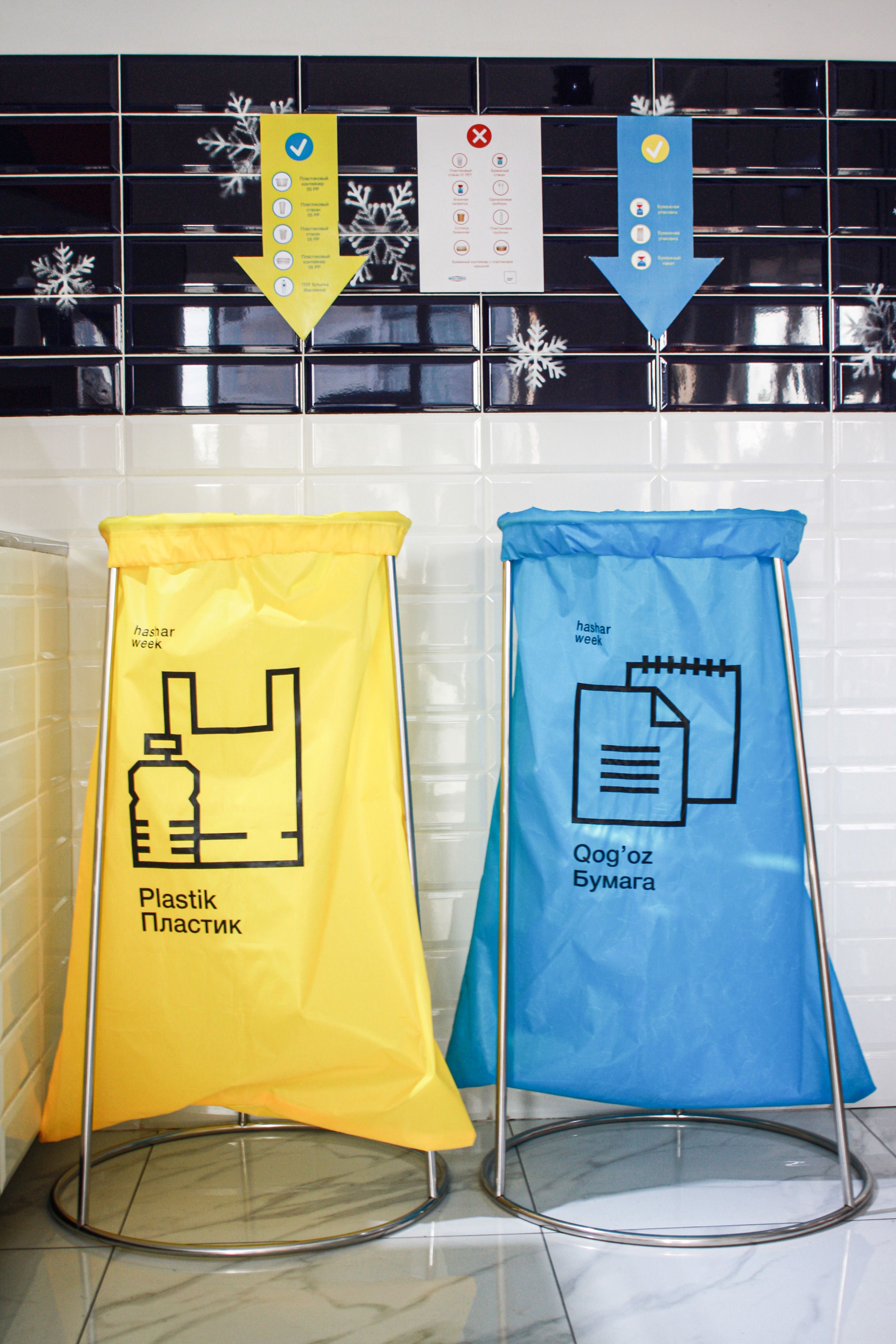
Recycling efforts during Hashar Week. Photo courtesy: Alina Abdurazakova
Recycling efforts during Hashar Week. Photo courtesy: Alina Abdurazakova
Other entrepreneurs, like Timur Akramov, a deputy director of Sanfa Products Ltd, consider secondary waste a valuable raw material. Sanfa Products is one of the first companies in Uzbekistan to recycle plastic waste. Currently, the company processes 5,000 tons of plastic bottles per year and produces polyester fiber, which is used in its own production of geotextiles, linoleum, synthetic materials for textile industry and similar products.
“Waste recycling can be not only beneficial to nature, but also a profitable business,” Akramov said. “Garbage in our situation is not garbage, but the most valuable basic raw material for processing. For example, our company began to produce linoleum in 2011 based on imported raw materials, and in 2014 we opened a plastic processing plant to produce synthetic polyester fiber, having invested more than $7 million in the project. Earlier we bought raw materials in Korea and Ukraine for the production of non-woven backing for linoleum, [but] now we produce 100 percent of the backing for linoleum ourselves.”

Hashar Week promotes recycling in residential buildings and schools as well as offices. Photo courtesy: Alina Abdurazakova
Hashar Week promotes recycling in residential buildings and schools as well as offices. Photo courtesy: Alina Abdurazakova
Akramov believes that there is a need to improve the culture of waste management in the country and aims to show people that “waste can have a second life.”
As I learned more about Uzbekistan through the lens of the country’s response to climate change, I also became aware of businesses that prioritize the health of the environment, even if it’s not their primary mission. Holmuradov Design, for example, donates a portion of its profits to Hashar Week to show support for its objectives. The designer Ulugbek Kholmuradov, who founded the company, believes in a grassroots approach to environmental solutions.
Culture and society are enriched by small, simple acts like “giving way to a pedestrian, preserving water, or not throwing rubbish on the streets,” he said, adding that an appreciation for the environment is “a deeply rooted attitude found in the historical and cultural traditions of our people.”
I never imagined that the aftermath of this historic sandstorm would uncover so much valuable information about 21st-century green solutions and the tradition of conservation in my new home. But the new knowledge has made this long-anticipated move much more meaningful. Indeed, timing is everything.
Kymbat Ybyshova is an IFC communications officer based in Tashkent.
